| Page last updated
24 August 2006 |
MUSSELp in Congo, 2006: Non-Malacological Pictures
From 25 July to 19 August 2006, the MUSSEL Project was engaged with the Fish Folks of the American Museum of Natural History in a aquatic survey of the Lower Congo River in the Republic of Congo. This page deals with non-malacological aspects of the trip. For information about the freshwater mussels and associated collecting sites, click here. In the various categories below, click the thumbnail to see a larger image.
The Crew

Kevin Cummings
|

Daniel Graf
|
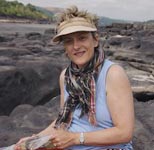
Melanie Stiassny
|

Bob Schelly
|
Our core expeditionary group was comprised of three teams: the MUSSEL Project, the AMNH fish folks and adventure-seekers representing the aquarium trade.
In addition, Victor, Armel and Charles served us well as local guides and provided logistical support.
Photos by Oliver Lucanus, Kevin Cummings and Jake Lowenstein. |

Jake Lowenstein
|

Oliver Lucanus
|
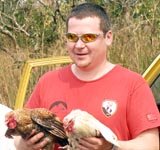
Mikhael Sotnikov
|

Charles Oumbamahou
|
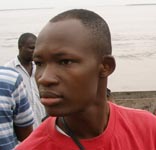
Armel Ibala
|

Victor Mamonekene
|
Brazzaville
|
|
In Brazzaville, our base of operations was the "Protestant Mission," although some of us availed ourselves of various other housing options. In many ways the capital city could be described as a lively, colorful African city. The primary color, however, was the green of the ubiquitous taxis.
But Brazzaville also had its less desirable side. |
Accommodation
|
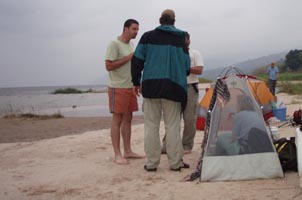 When we weren't in the city, we camped. Over the course of our trip we set up our tent village in four different spots. From each of our camp sites, we could see the Congo River. When we weren't in the city, we camped. Over the course of our trip we set up our tent village in four different spots. From each of our camp sites, we could see the Congo River.
In Kintele, we pitched our tents at a "resort." The facilities were not something that can be discussed in polite conversation.
At the mouth of the Foulakari, we camped on a sand bar below the bouldered bank of the Congo. That site afforded us an excellent opportunity to witness the weird oscillations of the Congo. Click here to see a video.
Near the village of Boko, we camped at the top of a waterfall. See "Sights" below for our spectacular view.
We spent only one night on a sand bar at the mouth of a creek about 15 km above Malebo Pool. It was a fine site, but we didn't choose it: that was where the boat's motor died. |
Sights
|
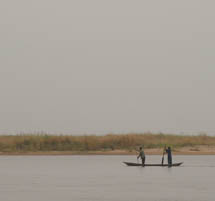 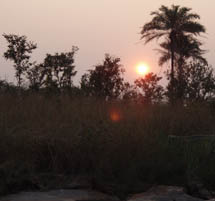 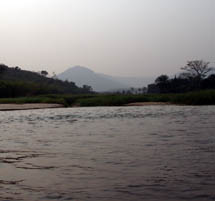 |
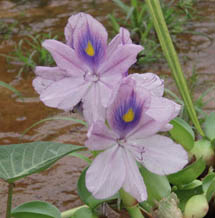 The extreme gradient of the Congo River provided us with an endless array of beautiful vistas and interesting sights. The extreme gradient of the Congo River provided us with an endless array of beautiful vistas and interesting sights.
At the foot of Malebo Pool, near the mouth of the Djoué River, is the enormous white-water area known as Les Rapides.
We camped near the Chutes of the Foulakari River, and our campsite atop the waterfall at Bela had a panoramic view of the Congo.
|
Travel
|
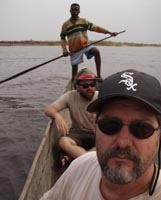 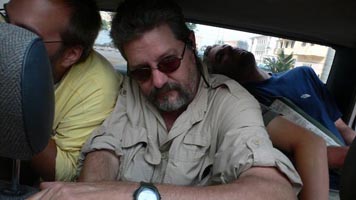
|
When we weren't in the city, the tracks were generally poor. Not that the roads were particularly good in Brazzaville, but at least there they still deserved to be called roads. Our principle means of transportation was via 4x4 pick-up trucks: two for nine of us, plus two drivers plus two "logisticians." The latter were absolutely necessary as the trucks frequently needed TLC. For one stretch, the suspension had to be augmented with a piece of tree trunk.
To gain access to various parts of the Congo River, we occasionally hired boats. Local pirogues were of the dug-out style, and they were either powered by an outboard motor or purely by braun.
In Brazzaville, taxis were readily available — most of the time. Who says six people can't fit in a hatch-back?
|
Fish
|